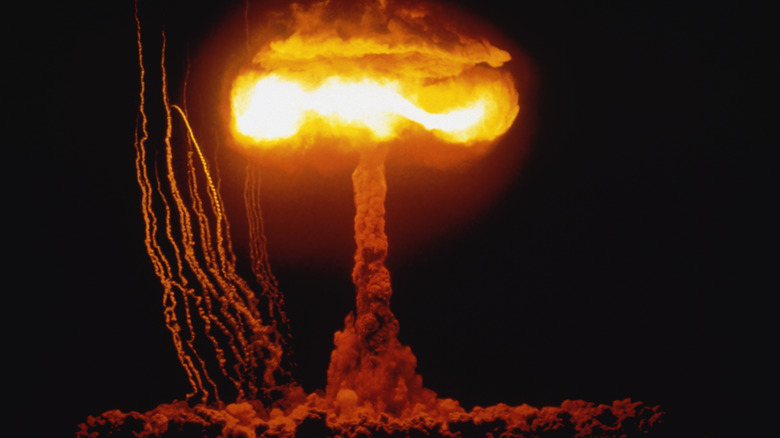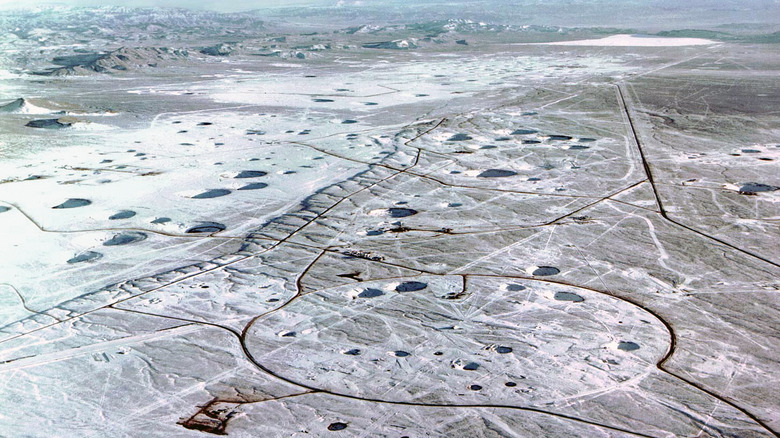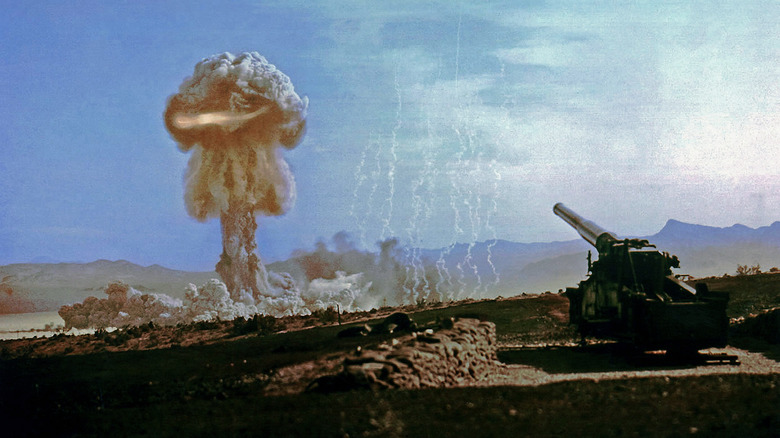This Western Tourist Attraction Is One Of The Most Dangerous In The US
It can be easy to switch to YOLO mode when you go on vacation. After all, if you're already taking a break from your everyday life, you might as well adopt the "go big or go home" mantra. If you have the means, it's more than okay to dress to the nines, eat all the gourmet food, try all the delicious cocktails, and step out of your comfort zone occasionally.
The perfect place to do all of that is Nevada. The bright lights, flashy casinos, and extravagant experiences found in Reno, Laughlin, and Las Vegas create the perfect environment for a great time. There may even be time to squeeze in something educational, thanks to the state's amazing museums and historical landmarks.
However, not every part of the Silver State shares Sin City's famous motto of "What happens in Vegas, stays in Vegas." About 65 miles northwest of the world famous vacation destination, you can visit the Sedan Crater in The Nevada National Security Site (NNSS), formerly known as The Nevada Test Site. This government-run outdoor facility allows travelers to marvel at this manufactured wonder, but there is a slight chance they could be exposed to radioactive remnants left over from decades of atomic testing in the area. Due to the potential of taking home an unwanted souvenir that could affect your health, this tourist attraction is considered one of the most dangerous places to add to your vacation itinerary.
The Nevada National Security Site
If you don't learn from history, you're doomed to repeat it. Nevada understands this old saying and established The National Atomic Testing Museum in Las Vegas to educate the masses about the history of nuclear testing and its impact on the world. The state also opened The Nevada National Security Site to show visitors where the testing took place. These tours span about 250 miles of the 1,355-square-mile area (larger than the state of Rhode Island) and are free and open to the general public. The catch is that they are only offered sparingly throughout the year and require an approval process that comes with a good amount of red tape. Yet, these tours are still incredibly popular and fill up fast.
As a part of the tour, groups are transported via a chartered bus to the Sedan Crater. Listed on The National Registry of Historic Places since 1994, the crater is the result of an experiment of The Plowshare Program, which explored the uses of nuclear explosives for peaceful measures. The 1962 experiment detonated a 104-kiloton explosion that affected 12 million tons of earth in the surrounding area. The result was a 1,280-foot wide and 320-foot deep hole — the largest non-natural crater in the United States.
The Radiation Exposure Compensation Act
What makes a massive hole in the middle of the desert a dangerous place to visit? It's less about the possibility of falling in and more about radioactivity. The site conducted over 900 nuclear tests between 1951 and 1992, with 828 of those tests occurring underground. Over the years, that nuclear material was absorbed by the environment and spread to the surrounding areas thanks to natural occurrences like wind and precipitation.
While the state and federal governments consider Sedan Crater safe to visit, there are still plenty of questions concerning lingering radiation and the radioactive waste buried at the NNSS. The U.S. government has even offered compensation to people impacted by the experiments. President George H.W. Bush signed The Radiation Exposure Compensation Act in 1990 to help "Downwinders" (or anyone who lived approximately 20 miles downwind from ground zero of the experiments and their fallouts) who developed health issues after living in the nearby Nevada counties between 1951 and 1963. There have been amendments applied and proposed to this bill over the years as new scientific reports emerged with new information about the long-term effects of atomic radiation, its connection to various types of cancer and other diseases, and what it all could mean for people who visit or live nearby the testing site. This is not really the comfort zone anyone should want to step out of on a vacation.


